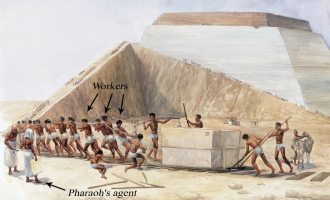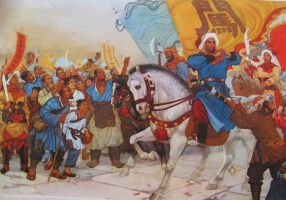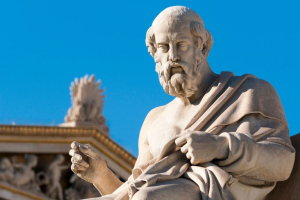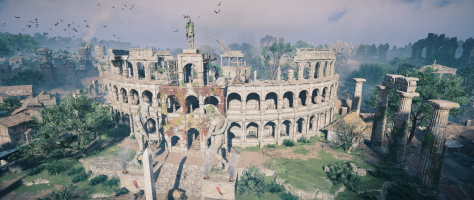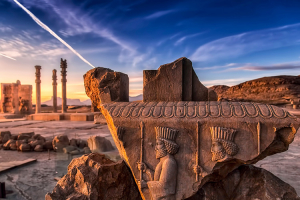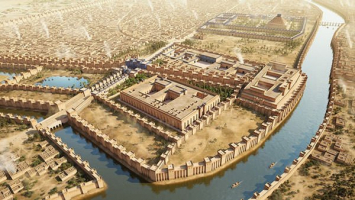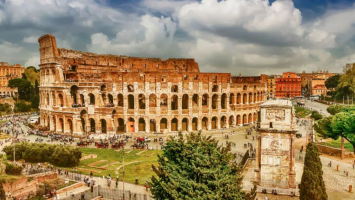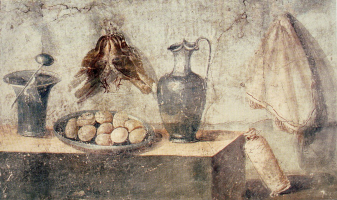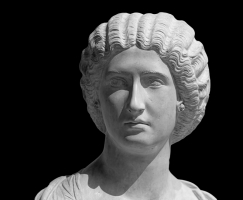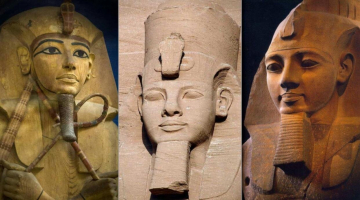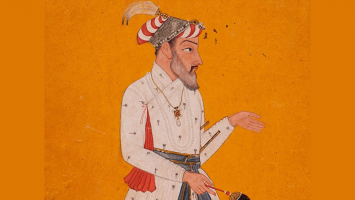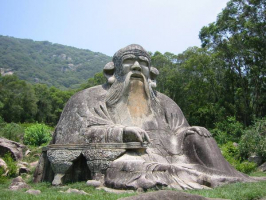Top 7 Most Important Events of Ancient Greece
The foundation for classical and modern Greece was substantially laid by events in ancient Greece. Greece saw a variety of political and geographic changes ... read more...during the Archaic period. Listed below are some major the most important events of Ancient Greece.
-
Because the Greeks required a system of verifiable installments, the first realized coins were presented in either Lydia or Ionia in Asia Minor before 600 BC. Electrum, a mixture of gold and silver, was used to make these coins. By the middle of the 6th century BC, inventive developments had made the production of pure gold and silver coins less difficult. Ruler Croesus introduced a two-metal standard that allowed pure gold and pure silver to be exchanged for money in the commercial center. Every city had its own cut-out designs and signs on the coins, which were used in most urban settlements as stopgap currency. The silver stater or didrachm of Aegina was one such currency.
The Attic standard, which saw a drachm rising to 4.3 grams of silver, served as the basis for Athens' coinage. With the passage of time, Athens' enormous silver reserves increased in strength in exchange and became the dominant standard. These coins were also known as "owls" because of their central design.
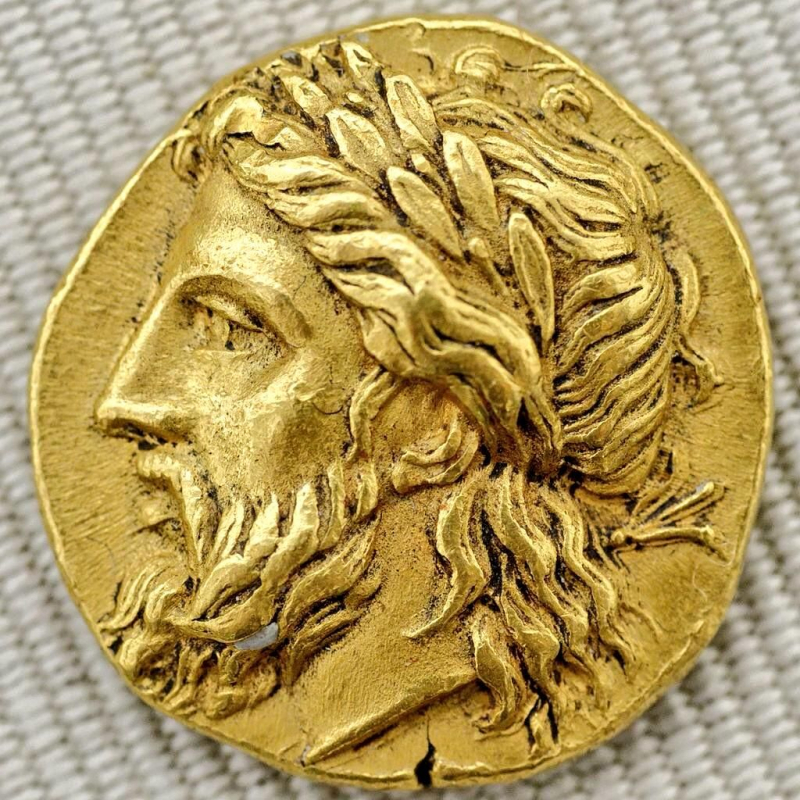
Photo: Pinterest - Greek coins 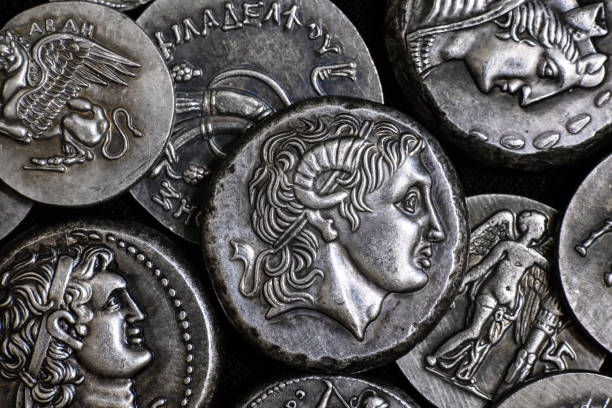
Photo: iStock - Greek Coin -
The great Peloponnesian War, which covered the entirety of the Greek world, was primarily a conflict between Athens and Sparta, the two largest towns in Greece. It's one of the most important events of Ancient Greece. Sparta's Peloponnesian League opposed Athens' Delian League in this conflict. The main reason the fight is well-known is because historian Thucydides wrote about it. This three-phased conflict served as a showcase for the Greeks' innovative military strategies.
The Archidamian War, in which Sparta twice invaded Attica, was the first stage. Utilizing its dominance over the waters, Athens attacked the Peloponnese shore. The Peace of Nicias, a deal signed in 421 BC between the two leagues, put an end to this stage of the conflict.
However, the resumed conflict between Sparta and Athens put the treaty in jeopardy. Athens dispatched a sizable expeditionary force to invade Syracuse in 415 BC. In 413 BC, the attempt was unsuccessful, and the entire army was wiped off.
The end of the war was brought on by this failure. The Decelean War or the Lonian War are the names given to this conflict. In the third and last phase, Sparta was helped by Persia, and the Athens' vassal states experienced uprisings. The battle was over when the Athenian navy was wiped out at Aegospotami. Following this loss, Athens gave up the following year. Athens' destruction and its population' enslavement were sought by Thebes and Corinth, but the Spartans refused.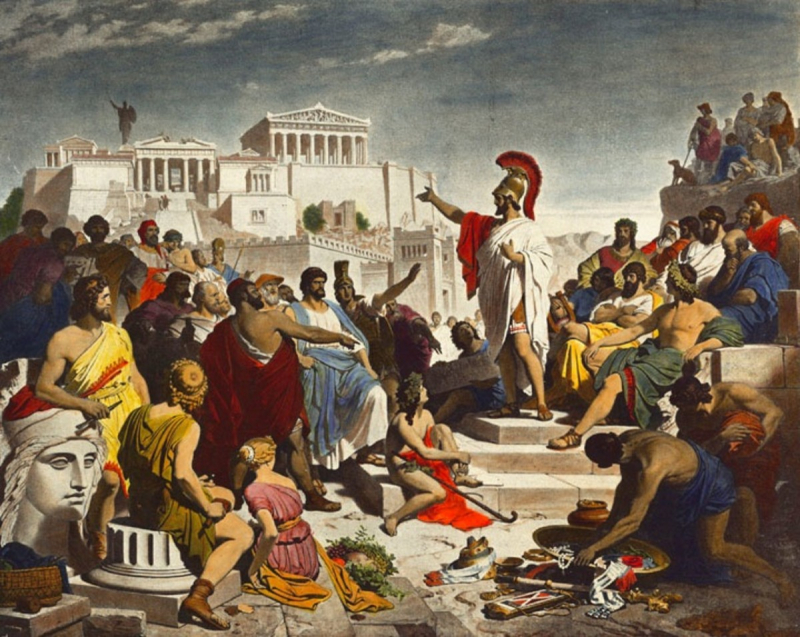
Photo: www.history.com - Peloponnesian War 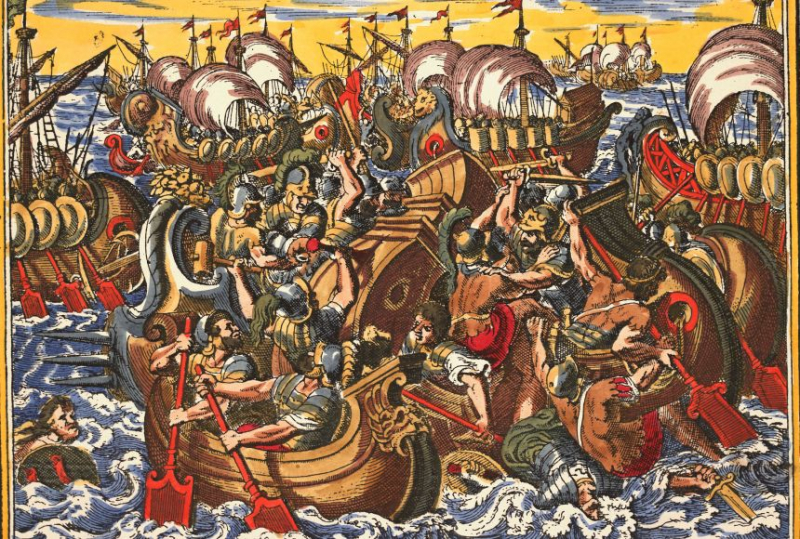
Photo: National Geographic Society - The Peloponnesian War -
Pericles was a famous orator who had great success in the Greek Assembly. He was a superb statesman. Under his rule, Athens expanded, and the state instituted a wide range of events. At the height of Pericles' power, the Parthenon was also being built.
The thetes, or the lowest socioeconomic class of people, were permitted to hold public office as part of a number of reforms made by Pericles. The change gave the thetes, who were underprivileged, the chance to support themselves. The development of the misophonia, or "paid function," where citizens were paid very well to appear in court as jurors, was another successful step.
The educated people of Athens. Boys were first educated at home until they were required to attend school at age seven. The primary courses were mathematics and music, and physical education was rigorous, which helped kids cultivate a spirit of sportsmanship. Because of the patriarchal nature of Athenian society, girls and women were expected to remain at home.
There was no opposition to Pericles' authority. He was in charge of Athens throughout the majority of the fifth century BC and held that position until his death in 429 BC.
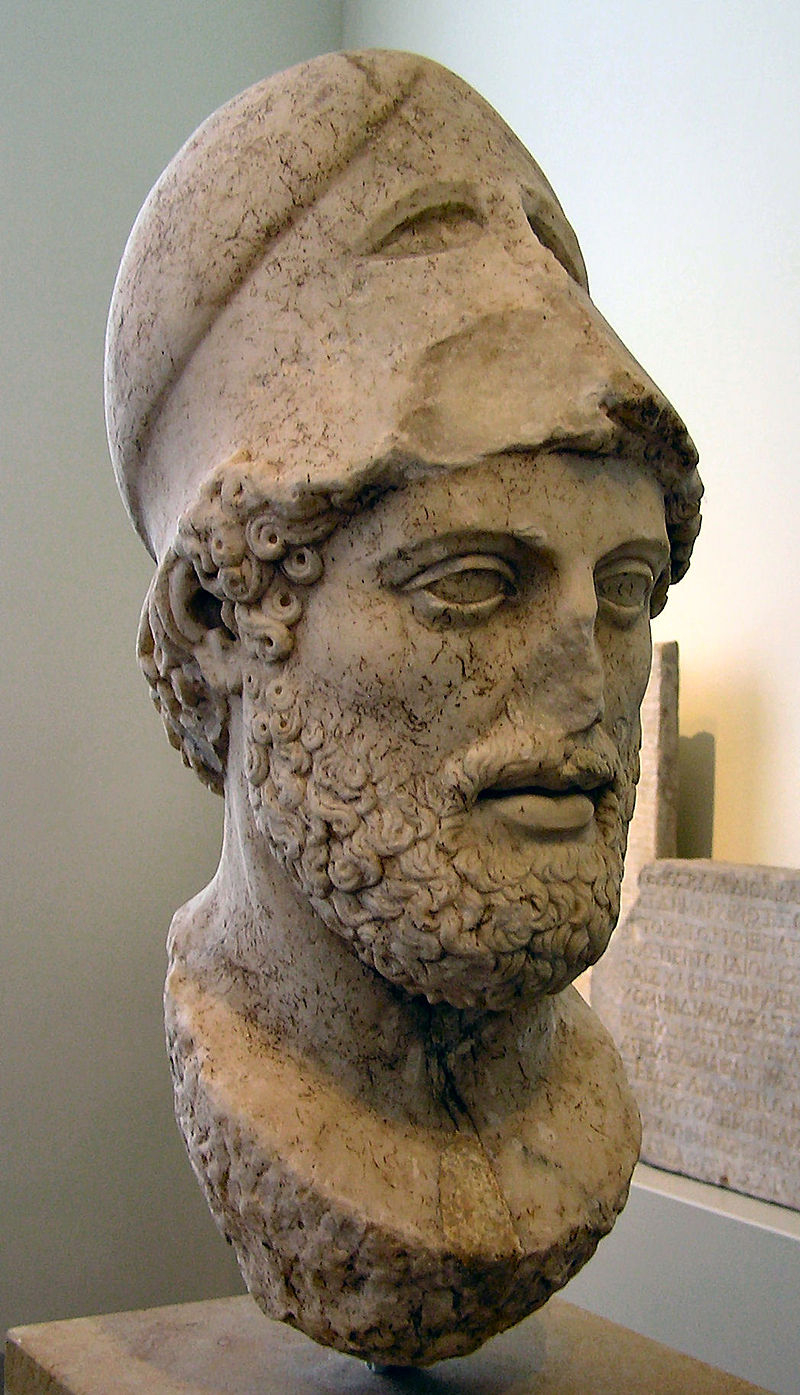
Photo: Simple Wikipedia - Pericles 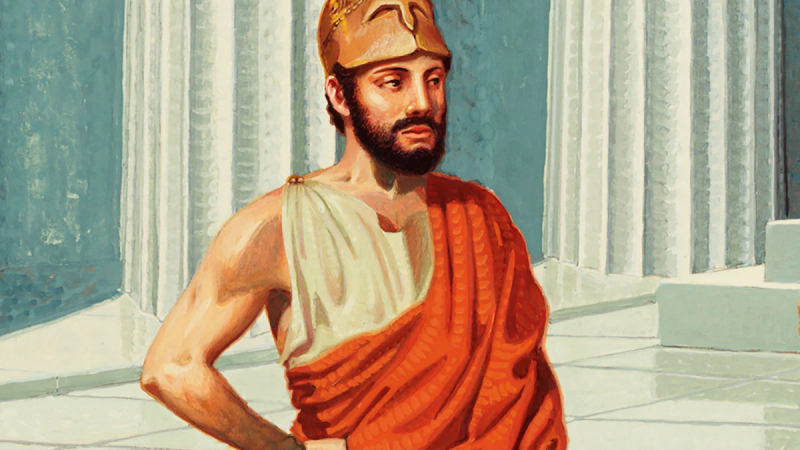
Photo: ThoughtCo - Pericles -
Greece had repressive tyrants as its leaders. They were powerful opportunists who maintained their position of authority with the aid of mercenary soldiers. Tyrants frequently came from the nobility, and public disapproval of them varied greatly from place to place.
The most well-known tyrannies were those established in roughly 650 BC by Orthagoras at Sicyon and Cypselus at Corinth. The Thrasybulus of Miletus was the most well-known tyrant of Asiatic Greece. Cleisthenes ruled Sicyon from approximately 600 to 570 BC.
He was the Orthagorid despot who was most effective due to his exploitation. Periander, the son of Cypselus, ruled Cornith for 40 years and was regarded as one of the most dreadful tyrants. He passed away shortly after the 580s BC overthrow of the Corinthian dictatorship.
Peisistratus was successful in establishing tyranny at Athens towards the middle of the sixth century, although Sparta disregarded the establishment of tyranny. Soon later, in 510 BC, King Cleomenes I of Sparta banished his son. The era of tyranny came to an end as a result, yet the dictators persisted.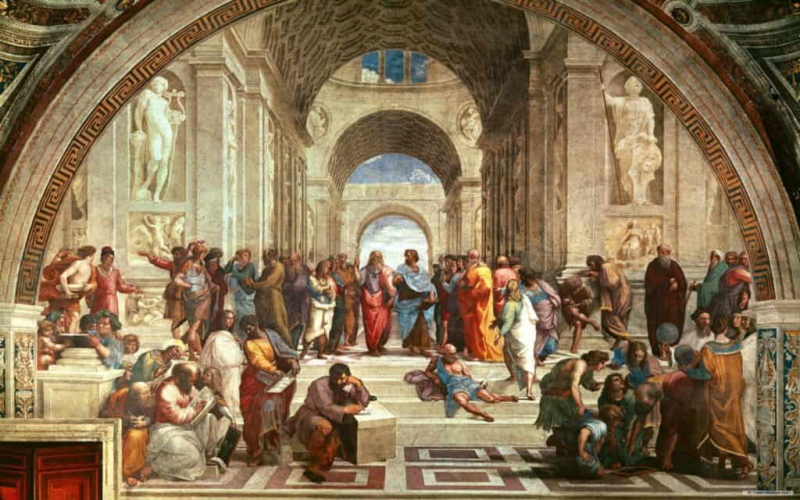
Photo: Cruel and Oppressive- Ancient Greek Tyrants Video: YouTube - Ancient Greece: Rise of the Tyrants -
The Trojan War's existence has always been disputed and uncertain. It is also one of the most important events of Ancient Greece. Others have discovered strong evidence that it actually happened, while some researchers dismiss it as a fable.
The Trojan War is the conflict between the Greeks and the Troyans in Greek mythology. After Paris, the Trojan prince, abducted Helen, the wife of Menelaus of Sparta, the fight erupted. The Trojans refused to return her when Menelaus requested it. Agamemnon was then persuaded by Menelaus to command an army against Troy. Agamemnon led a force of nearly a thousand ships from all around the Hellenic world, as well as the Greek heroes Ajax, Achilles, Odysseus, and Nestor.
The Greeks attacked Troy, the surrounding cities, and the countryside over the following nine years. However, the heavily defended town held out and won the war, protected by Prince Hector and other sons of the Trojan dynasty. The Greeks created a massive wooden horse to house minor fighting formations in order to avoid surrendering. Laocoön and Cassandra warned the Trojan king repeatedly not to let the horse into the city, but the monarch allowed it to enter. The Greeks emerged from hiding that night, followed by their fellow countrymen. They unlocked the city gates and started attacking anyone who got in their way. Finally, Troy was destroyed.
Although there is no proof that Achilles and Helen ever existed, most academics concur that Troy was a real city and that the Trojan War actually took place.
Video: YouTube - The Entire Story of the Trojan War Explained 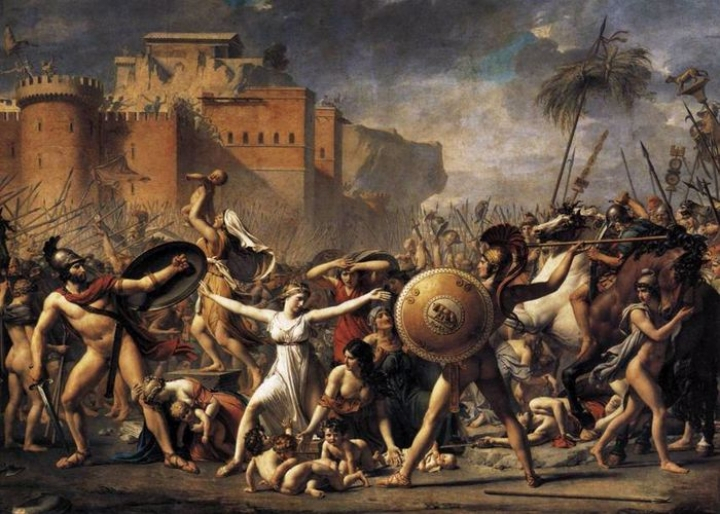
Photo: Greeking.me - Τhe Trojan War -
The Bronze Age in ancient Greece was coming to an end under the Mycenaean civilization. Greece's architecture, writings, art, and public administration serve as examples of the early stages of this evolved culture.
The Mycenaean Greeks made advancements in engineering, architecture, and military infrastructure. These discoveries improved the economy and altered trade in the Mediterranean. In addition, it has been established that Linear B, their syllabic writing, is among the oldest Greek texts. Numerous gods that are also revered in the Olympic pantheon were part of their faith.
An elite military class that ruled from a web of palace kingdoms was in charge of the civilisation. These nations established rigid political, economic, social, and hierarchical structures. The leader of the community was the king, or wanax.
Along with trade, the arts were in vogue. It was common to see geometric patterns and decorative themes. There were certain additions to the Minoan pottery shapes, like the goblet and the alabastron. Additionally common were standing female and animal terracotta statuettes. Bull-leaping, flora, captured lions, combat scenes, and other common Mycenaean pastimes were all shown in frescoes. Because the Mycenaeans were so devout, burial was regarded as a necessary ritual.Nevertheless, this society mysteriously came to an end approximately 1100 BC, during the end of the Bronze Age, possibly as a result of an earthquake, internal strife, or invasion.
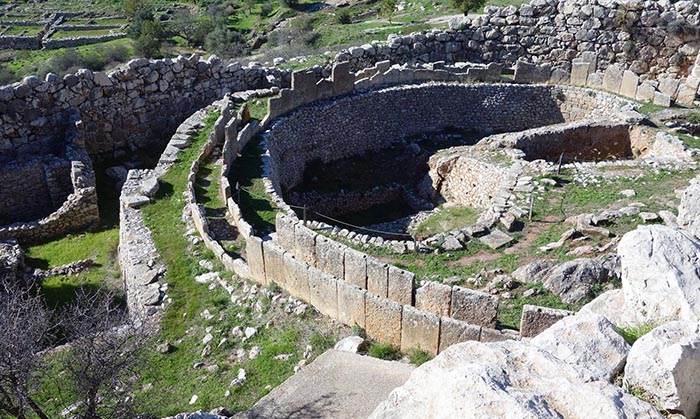
Photo: Khan Academy - Mycenaean art, an introduction 
Photo: Greeka - Geography of Mycenae, Greece -
After the Battle of Corinth in 146 BC, the Romans took over the Greek landmass. At that period, Macedonia became part of the Roman Empire. While some Greeks managed to survive with only partial freedom, many others gave up. The Kingdom of Pergamon came under Roman control in 133 BC, and it was decided that Pergamon would be divided among Rome, Pontus, and Cappadocia. King Attalus III had left all of his territories to the Romans in his will.
Athens staged an uprising in 88 BC, following the example of other Greek cities, but the Roman general Sulla triumphed, crushing all of their aspirations to become independent. The territory was continually being destroyed by Roman common warfare until 27 BC, when Augustus designated the area as Achaea. Following this, the Romans began to invest heavily in rebuilding the destroyed urban communities. Athens flourished as the center of theory and learning while Corinth was designated as the new territory's capital
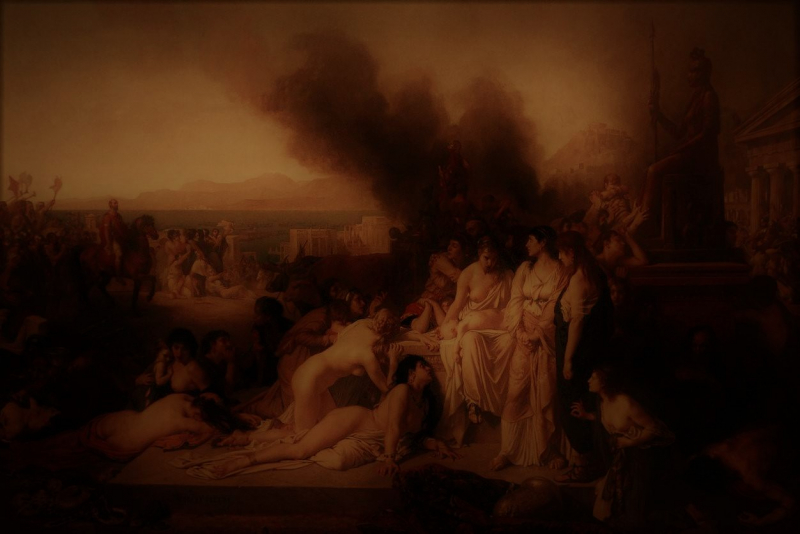
Photo: Brewminate - The Battle of Corinth and the Rise of Roman Domination over Greece in 146 BCE – Brewminate: A Bold Blend of News and Ideas 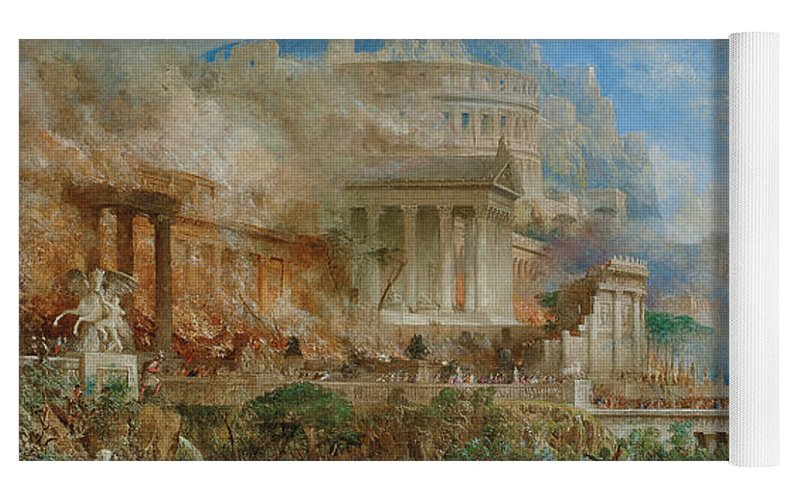
Photo: Wikipedia - Battle of Corinth (146 BC)









